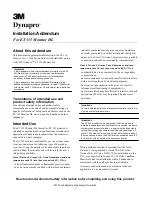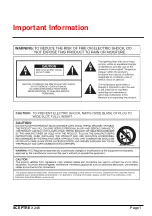
FAQs (Frequently Asked Questions)
peripherals for multimedia computers come on the market every day. With USB, up to 127
devices can run simultaneously on one computer. USB permits "hot plug-in." No need to
shut down, plug in, reboot and run set up to install peripherals. No need to go through the
reverse process to unplug a device. Bottom line: USB transforms today's "Plug-and-Pray"
into true Plug-and-Play!
Q:
What is a USB hub ?
A:
A USB hub provides additional connections to the Universal Serial Bus. A hub's
upstream port connects a hub to the host, usually a PC. Multiple downstream ports in a hub
allows connection to another hub or device, such as a USB keyboard, camera or printer.
RETURN TO TOP OF THE PAGE
LCD Panel Technology
Q:
What is a Liquid Crystal Display?
A:
A Liquid Crystal Display (LCD) is an optical device that is commonly used to display
ASCII characters and images on digital items such as watches, calculators, portable game
consoles, etc. LCD is the technology used for displays in notebooks and other small
computers. Like light-emitting diode and gas-plasma technologies, LCD allows displays to
be much thinner than cathode ray tube (CRT) technology. LCD consumes much less power
than LED and gas-displays because it works on the principle of blocking light rather than
emitting it.
Q:
How are LCDs made?
A:
LCDs are created from two glass plates separated from each other at a distance of a few
microns. The plates are filled with liquid crystal and then sealed together. The top plate is
colored with an RGB pattern to make the color filter. Polarizers are then glued to both plates.
This combination is sometimes called 'glass' or 'cell.' The LCD cell is assembled into a
'module' by adding the backlight, driver electronics and frame.
Q:
What is polarization ?
A:
Polarization is basically directing light to shine in one direction. Light is electromagnetic
waves. Electric and magnetic fields oscillate in a direction perpendicular to the propagation
of the light beam. The direction of these fields is called the 'polarization direction'. Normal or
non-polarized light has fields in several directions; polarized light has a field in only one
file:///D|/My%20documents/dfu/W7/english/170s5/safety/saf_faq.htm (5 of 8)6/7/2004 5:25:55 PM
















































